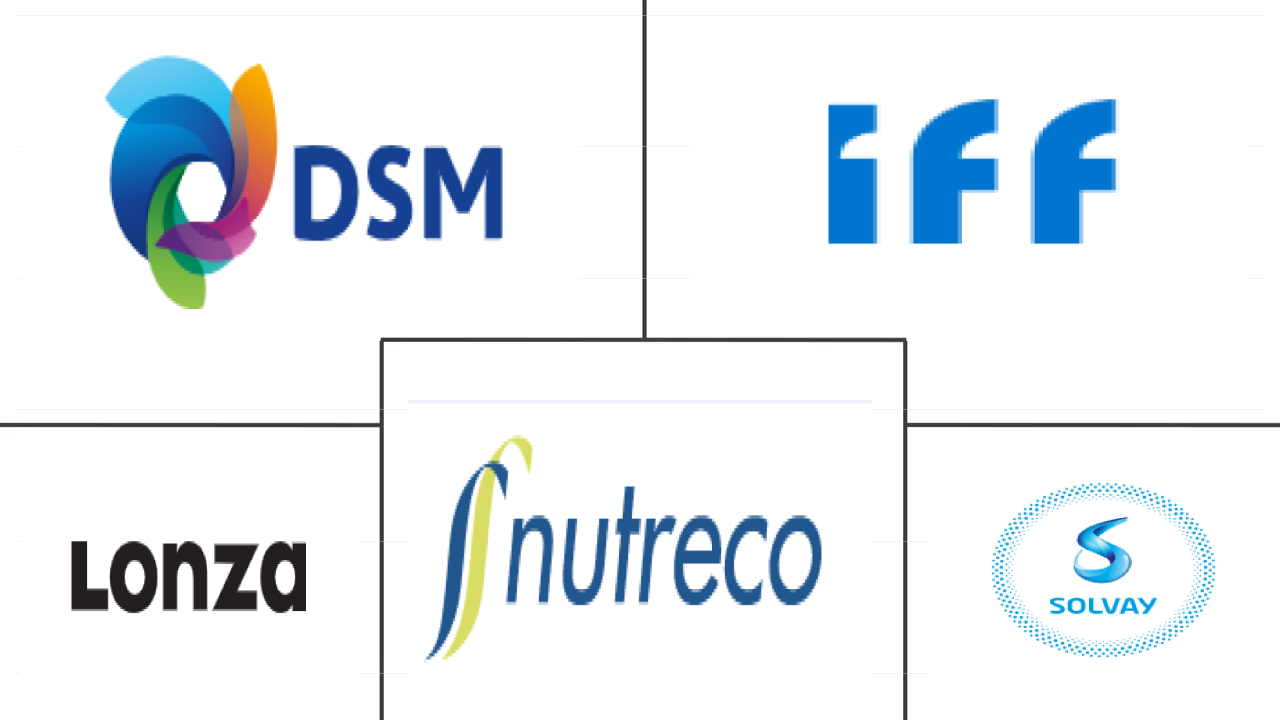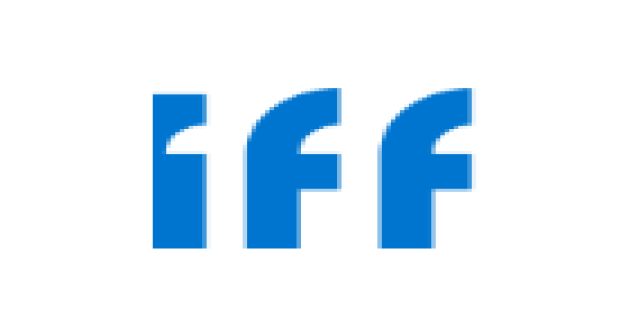Market Size of australia feed additives Industry
|
|
Study Period | 2017 - 2029 |
|
|
Market Size (2024) | USD 234.71 Million |
|
|
Market Size (2029) | USD 296.52 Million |
|
|
Largest Share by Additive | Amino Acids |
|
|
CAGR (2024 - 2029) | 4.79 % |
|
|
Fastest Growing by Additive | Antioxidants |
Major Players |
||

|
||
|
*Disclaimer: Major Players sorted in no particular order |
Australia Feed Additives Market Analysis
The Australia Feed Additives Market size is estimated at 234.71 million USD in 2024, and is expected to reach 296.52 million USD by 2029, growing at a CAGR of 4.79% during the forecast period (2024-2029).
234.71 Million
Market Size in 2024 (USD)
296.52 Million
Market Size in 2029 (USD)
3.68 %
CAGR (2017-2023)
4.79 %
CAGR (2024-2029)
Largest Market by Additive
24.05 %
value share, Amino Acids, 2023
Amino acids are the largest segment due to their benefits to animals and their characteristics, such as providing good gut health, muscle development, and egg formation.
Largest Market by Animal
52.13 %
value share, Poultry, 2023
Poultry is the largest segment, as poultry feed is largely produced due to high poultry production and the high demand for poultry meat and products.
Fastest-growing Market by Additive
5.59 %
Projected CAGR, Antioxidants, 2024-2029
The segment for antioxidants is the fastest-growing segment due to benefits such as an increase in the shelf life of feed, limiting the production of toxic metabolites, and providing protein.
Fastest-growing Market by Animal
5.90 %
Projected CAGR, Ruminants, 2024-2029
Ruminants are the fastest-growing animal segment due to the increasing animal population, increasing demand for milk, and the health benefits of feed additives.
Leading Market Player
12.09 %
market share, IFF(Danisco Animal Nutrition), 2022

IFF is the market leader as the company is expanding its regional product portfolio by launching new products. For instance, it launched Axtra Phy.
- In Australia, amino acids, binders, minerals, and probiotics are the major feed additive types used in animal feed, and they accounted for a significant market share of 56% in the total feed additives market in 2022. Among the feed amino acids used in animal feed, lysine and methionine were the most significant, accounting for 54.7% of the total feed amino acids market value in 2022. The higher share of these amino acids was due to their efficiency in improving gut health, easy animal digestion, and increased meat production.
- Synthetic feed binders play a crucial role in preventing diseases by improving animal digestion and nutrition intake. Synthetic binders held the largest share in 2022, accounting for 65.4% of the binders segment in the country. Poultry birds were the major animal types in the Australian feed additives market in 2022, accounting for 52.1% of the market share value, owing to their high feed intake and production, which was more than 4.3 million metric tons in 2022.
- Antioxidants such as citric acid are crucial in reducing the colonization of pathogens and limiting the production of toxic metabolites, thereby improving the availability of protein, calcium, phosphorus, magnesium, and zinc. Antioxidants are expected to be the fastest-growing segment in the Australian feed additives market, with a CAGR of 5.6% during the forecast period. They are used to prolong the shelf life of animal feeds.
- Based on the importance of feed additives in animal nutrition and the factors mentioned above, the demand for feed additives is anticipated to grow and record a CAGR of 4.8% during the forecast period in Australia.
Australia Feed Additives Industry Segmentation Australia Feed Additives Industry Segmentation
Acidifiers, Amino Acids, Antibiotics, Antioxidants, Binders, Enzymes, Flavors & Sweeteners, Minerals, Mycotoxin Detoxifiers, Phytogenics, Pigments, Prebiotics, Probiotics, Vitamins, Yeast are covered as segments by Additive. Aquaculture, Poultry, Ruminants, Swine are covered as segments by Animal.
- In Australia, amino acids, binders, minerals, and probiotics are the major feed additive types used in animal feed, and they accounted for a significant market share of 56% in the total feed additives market in 2022. Among the feed amino acids used in animal feed, lysine and methionine were the most significant, accounting for 54.7% of the total feed amino acids market value in 2022. The higher share of these amino acids was due to their efficiency in improving gut health, easy animal digestion, and increased meat production.
- Synthetic feed binders play a crucial role in preventing diseases by improving animal digestion and nutrition intake. Synthetic binders held the largest share in 2022, accounting for 65.4% of the binders segment in the country. Poultry birds were the major animal types in the Australian feed additives market in 2022, accounting for 52.1% of the market share value, owing to their high feed intake and production, which was more than 4.3 million metric tons in 2022.
- Antioxidants such as citric acid are crucial in reducing the colonization of pathogens and limiting the production of toxic metabolites, thereby improving the availability of protein, calcium, phosphorus, magnesium, and zinc. Antioxidants are expected to be the fastest-growing segment in the Australian feed additives market, with a CAGR of 5.6% during the forecast period. They are used to prolong the shelf life of animal feeds.
- Based on the importance of feed additives in animal nutrition and the factors mentioned above, the demand for feed additives is anticipated to grow and record a CAGR of 4.8% during the forecast period in Australia.
| Additive | |||||||||||
| |||||||||||
| |||||||||||
| |||||||||||
| |||||||||||
| |||||||||||
| |||||||||||
| |||||||||||
| |||||||||||
| |||||||||||
| |||||||||||
| |||||||||||
| |||||||||||
| |||||||||||
| |||||||||||
|
| Animal | |||||||
| |||||||
| |||||||
| |||||||
| Swine | |||||||
| Other Animals |
Australia Feed Additives Market Size Summary
The Australian feed additives market is poised for steady growth, driven by the increasing demand for animal nutrition solutions. Key components such as amino acids, binders, minerals, and probiotics dominate the market, with amino acids like lysine and methionine being particularly significant due to their benefits in enhancing gut health and meat production. Synthetic feed binders are crucial for improving animal digestion and nutrition intake, holding a substantial share of the market. The poultry sector is a major consumer of these additives, reflecting the high feed intake and production levels in the country. Antioxidants are emerging as a rapidly growing segment, valued for their role in prolonging feed shelf life and improving nutrient availability.
The poultry industry in Australia is experiencing robust growth, supported by rising domestic consumption and increasing export demand. Despite challenges such as disease outbreaks, the sector has shown resilience and continues to expand. The aquaculture industry also contributes to the market's growth, with significant increases in aquatic feed production and seafood consumption. This trend is expected to continue, driven by the need to meet the nutritional demands of a growing population. The market is moderately consolidated, with major players like DSM Nutritional Products AG and IFF (Danisco Animal Nutrition) leading the charge. Recent strategic acquisitions and collaborations aim to enhance feed additive offerings and expand global presence, further fueling market growth.
Australia Feed Additives Market Size - Table of Contents
-
1. MARKET SEGMENTATION (includes market size in Value in USD and Volume, Forecasts up to 2029 and analysis of growth prospects)
-
1.1 Additive
-
1.1.1 Acidifiers
-
1.1.1.1 By Sub Additive
-
1.1.1.1.1 Fumaric Acid
-
1.1.1.1.2 Lactic Acid
-
1.1.1.1.3 Propionic Acid
-
1.1.1.1.4 Other Acidifiers
-
-
-
1.1.2 Amino Acids
-
1.1.2.1 By Sub Additive
-
1.1.2.1.1 Lysine
-
1.1.2.1.2 Methionine
-
1.1.2.1.3 Threonine
-
1.1.2.1.4 Tryptophan
-
1.1.2.1.5 Other Amino Acids
-
-
-
1.1.3 Antibiotics
-
1.1.3.1 By Sub Additive
-
1.1.3.1.1 Bacitracin
-
1.1.3.1.2 Penicillins
-
1.1.3.1.3 Tetracyclines
-
1.1.3.1.4 Tylosin
-
1.1.3.1.5 Other Antibiotics
-
-
-
1.1.4 Antioxidants
-
1.1.4.1 By Sub Additive
-
1.1.4.1.1 Butylated Hydroxyanisole (BHA)
-
1.1.4.1.2 Butylated Hydroxytoluene (BHT)
-
1.1.4.1.3 Citric Acid
-
1.1.4.1.4 Ethoxyquin
-
1.1.4.1.5 Propyl Gallate
-
1.1.4.1.6 Tocopherols
-
1.1.4.1.7 Other Antioxidants
-
-
-
1.1.5 Binders
-
1.1.5.1 By Sub Additive
-
1.1.5.1.1 Natural Binders
-
1.1.5.1.2 Synthetic Binders
-
-
-
1.1.6 Enzymes
-
1.1.6.1 By Sub Additive
-
1.1.6.1.1 Carbohydrases
-
1.1.6.1.2 Phytases
-
1.1.6.1.3 Other Enzymes
-
-
-
1.1.7 Flavors & Sweeteners
-
1.1.7.1 By Sub Additive
-
1.1.7.1.1 Flavors
-
1.1.7.1.2 Sweeteners
-
-
-
1.1.8 Minerals
-
1.1.8.1 By Sub Additive
-
1.1.8.1.1 Macrominerals
-
1.1.8.1.2 Microminerals
-
-
-
1.1.9 Mycotoxin Detoxifiers
-
1.1.9.1 By Sub Additive
-
1.1.9.1.1 Binders
-
1.1.9.1.2 Biotransformers
-
-
-
1.1.10 Phytogenics
-
1.1.10.1 By Sub Additive
-
1.1.10.1.1 Essential Oil
-
1.1.10.1.2 Herbs & Spices
-
1.1.10.1.3 Other Phytogenics
-
-
-
1.1.11 Pigments
-
1.1.11.1 By Sub Additive
-
1.1.11.1.1 Carotenoids
-
1.1.11.1.2 Curcumin & Spirulina
-
-
-
1.1.12 Prebiotics
-
1.1.12.1 By Sub Additive
-
1.1.12.1.1 Fructo Oligosaccharides
-
1.1.12.1.2 Galacto Oligosaccharides
-
1.1.12.1.3 Inulin
-
1.1.12.1.4 Lactulose
-
1.1.12.1.5 Mannan Oligosaccharides
-
1.1.12.1.6 Xylo Oligosaccharides
-
1.1.12.1.7 Other Prebiotics
-
-
-
1.1.13 Probiotics
-
1.1.13.1 By Sub Additive
-
1.1.13.1.1 Bifidobacteria
-
1.1.13.1.2 Enterococcus
-
1.1.13.1.3 Lactobacilli
-
1.1.13.1.4 Pediococcus
-
1.1.13.1.5 Streptococcus
-
1.1.13.1.6 Other Probiotics
-
-
-
1.1.14 Vitamins
-
1.1.14.1 By Sub Additive
-
1.1.14.1.1 Vitamin A
-
1.1.14.1.2 Vitamin B
-
1.1.14.1.3 Vitamin C
-
1.1.14.1.4 Vitamin E
-
1.1.14.1.5 Other Vitamins
-
-
-
1.1.15 Yeast
-
1.1.15.1 By Sub Additive
-
1.1.15.1.1 Live Yeast
-
1.1.15.1.2 Selenium Yeast
-
1.1.15.1.3 Spent Yeast
-
1.1.15.1.4 Torula Dried Yeast
-
1.1.15.1.5 Whey Yeast
-
1.1.15.1.6 Yeast Derivatives
-
-
-
-
1.2 Animal
-
1.2.1 Aquaculture
-
1.2.1.1 By Sub Animal
-
1.2.1.1.1 Fish
-
1.2.1.1.2 Shrimp
-
1.2.1.1.3 Other Aquaculture Species
-
-
-
1.2.2 Poultry
-
1.2.2.1 By Sub Animal
-
1.2.2.1.1 Broiler
-
1.2.2.1.2 Layer
-
1.2.2.1.3 Other Poultry Birds
-
-
-
1.2.3 Ruminants
-
1.2.3.1 By Sub Animal
-
1.2.3.1.1 Beef Cattle
-
1.2.3.1.2 Dairy Cattle
-
1.2.3.1.3 Other Ruminants
-
-
-
1.2.4 Swine
-
1.2.5 Other Animals
-
-
Australia Feed Additives Market Size FAQs
How big is the Australia Feed Additives Market?
The Australia Feed Additives Market size is expected to reach USD 234.71 million in 2024 and grow at a CAGR of 4.79% to reach USD 296.52 million by 2029.
What is the current Australia Feed Additives Market size?
In 2024, the Australia Feed Additives Market size is expected to reach USD 234.71 million.

